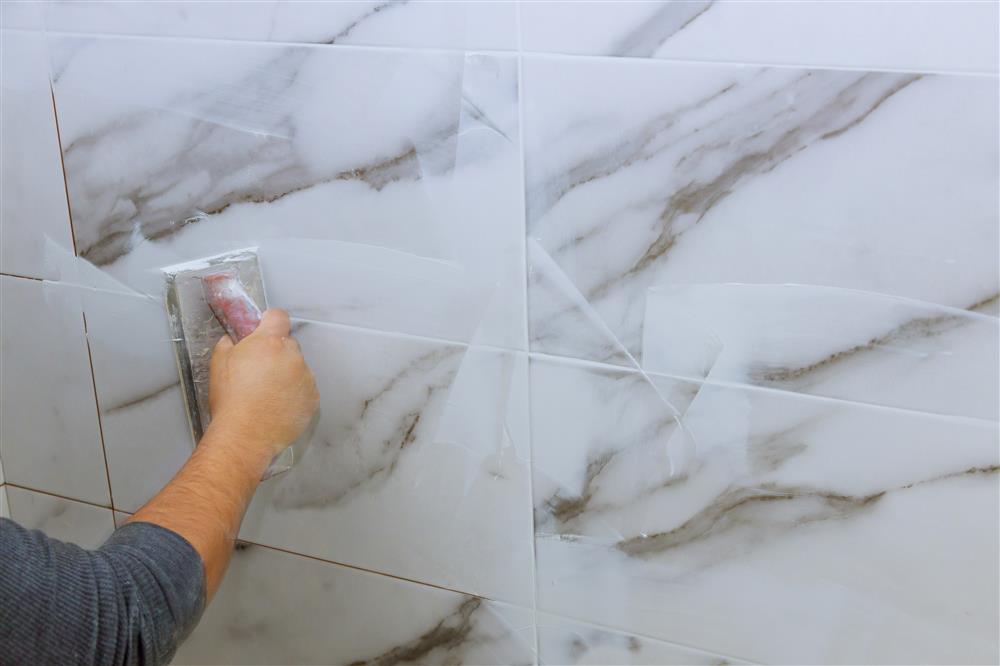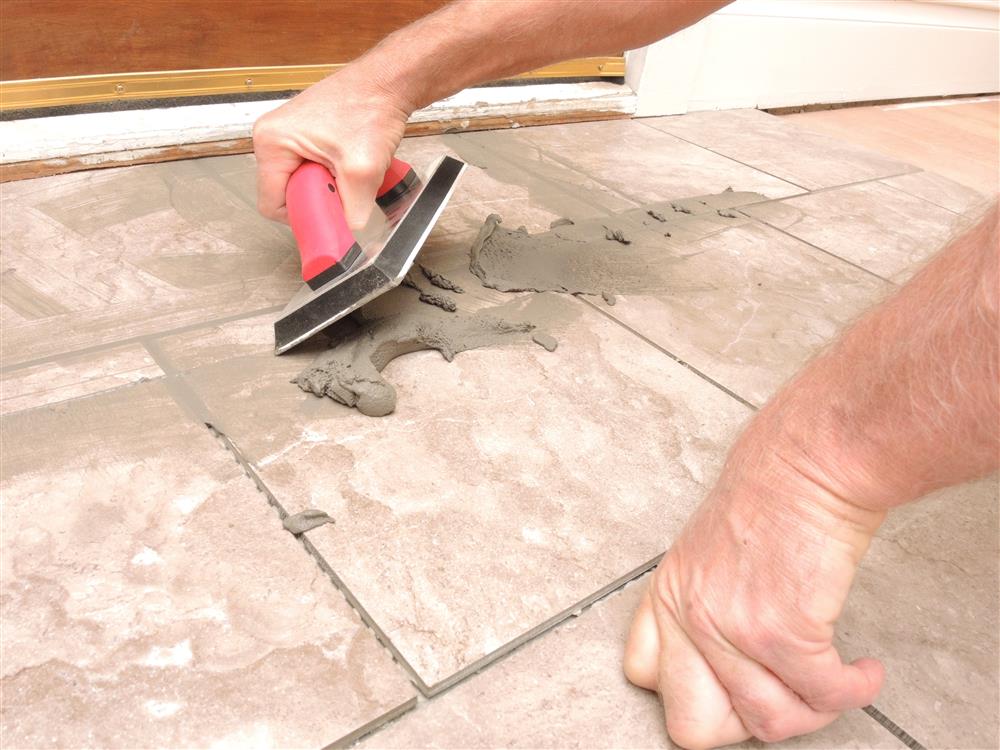After spending a good chunk of your budget on tiles you love and taking time to install them, you want to make sure they will last! Grout is necessary to hold tiles together, prevent chips and cracks, and provide crucial water and moisture protection. For most kitchen and bathroom remodels, you will be choosing between sanded and unsanded grout.
The key difference between sanded and unsanded grout is in their names – sand. Sand is a fine grit aggregate added to cement grout mixtures to prevent shrinkage and cracks in grout joints, but it isn’t always necessary for tiling projects.
Unsanded Grout
Unsanded grout is generally reserved for grout lines smaller than 1/8” wide because this type of grout lacks the aggregate – sand – that helps fill the space of larger grout lines. However, the absence of sand makes the grout stickier, which makes unsanded grout ideal for tile on vertical surfaces, like in a kitchen or bathroom. Unsanded grout is best used with wall tile, polished natural stone (limestone or marble), metal tiles, glass tiles, mosaic sheet tiles, and porcelain tiles.Also, it works well with tiles that can become easily scratched. Unsanded grout doesn’t require sealing, so the process is simpler!

Sanded Grout
Sanded grout is used for grout lines larger than 1/8” wide. A good rule to follow is the wider the joint, the courser the sand. You will need to use a “wide-joint” mixture that is heavily sanded. Because sand has a significant grit, there is a higher chance of it scratching delicate tiles such as marble or limestone. Sanded grout is best used with floor tiles, ceramic tiles, natural stone tiles, and porcelain tiles.


If you’re tiling in an area of your home that sees a lot of traffic, like the floors of a mud room or the walls and floors of a dedicated dog washing station you use every other day, you can opt for a polymer cement grout. Just like standard grout, this high-performance option is available in both sanded and unsanded varieties.
Pros and Cons
Unsanded Grout
Pros:
- Won't scratch tile
- Doesn't always require sealing
- Used on vertical surfaces
Cons:
- More expensive
- Fewer color choices
- Prone to shrinkage in larger joints
Sanded Grout
Pros:
- Budget-friendly
- Many color choices
- Durable
Cons:
- Can easily scratch surfaces
- Must be sealed
- Porous nature attracts dirt and grime
Even though one type is recommended for a particular use, they can be interchangeable. The key is paying attention to the size of the grout line. If your backsplash requires larger grout lines to achieve a design, go for sanded grout to prevent grout shrinkage. Conversely, if you want a natural, hardwood-like tile finish for your floors, unsanded grout would work best because of the smaller grout line.
Grout line, tile type, and your budget all need to be considered when deciding which grout type is best. Keep this guide handy when you visit your local tile retailer to ensure you make the best, most informed decision when it comes to your grout.
Before you go, check out our selection of Grout Floats and Grout Sponges. These tiling tools will help you achieve professional-looking grout joints with ease.
.png)